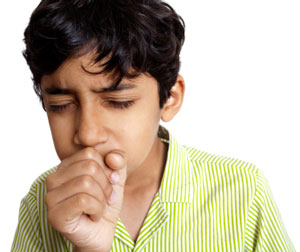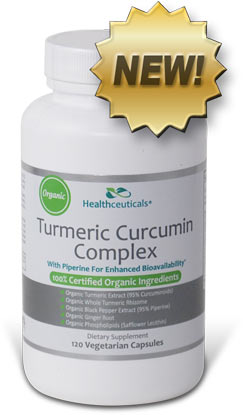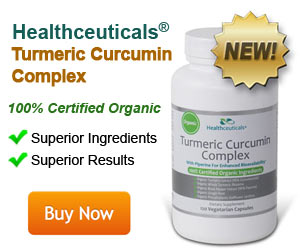Herbal Treatment for Staph, MRSA, & Toxic Shock Syndrome

Turmeric extracts and compounds could help treat staph infections. In the lab, turmeric even kills the drug resistant MRSA and ORSA types of staph. (v.22)
What Kinds of Infections Do Staph Bacteria Cause?
Staphylococcus aureus are gram positive types of bacteria that can cause: (v.1, 8, 18)
- Infections in the heart
- Meningitis
- Pneumonia
- Respiratory infections
- Septic shock
- Skin infections
- Urinary tract infections
MRSA and ORSA versions of S. aureus bacteria cause more severe symptoms. They are also resistant to conventional antibiotic treatments. (v.1, 8, 18)
Toxic Shock Syndrome
TSST-1 is the type of S. aureus that causes toxic shock syndrome (TSS). TSS is a severe and potentially deadly infection. It is most often associated with menstruation and tampon use. However, it can begin in mucous membranes other than the vagina (such as in the nose and sinuses). (v.8, 18)
Is There Evidence Turmeric Can Help Stop Staph Infections?
Modern studies suggest that turmeric compounds could help treat staph infections. Turmeric oil, some of the many individual turmeric compounds (such as curcumin), and combination therapies (e.g., with phototherapy) have shown effectiveness against different species and strains of Staphylococci bacteria. (v.132)
Researchers have found that some of the ways turmeric compounds uses to fight staph include:
- Blocking MDR-1, a gene responsible for resistance to multiple antibacterial and other drugs. (v.5)
- Suppressing sortase A, a surface protein that S. aureus uses to adhere to cells in order to infect them. (v.133)

| TYPE OF STUDY | EFFECT OF TURMERIC COMPOUND |
|---|---|
Staphylococci Antimicrobial Fabric |
Chitosan-coated cotton fabric dyed with turmeric's curcuminoid extracts for 1 hour in hot water reduced staph bacterial growth by 100%. (v.40) |
|
Toxic Shock Syndrome Lab & animal studies |
Topical curcumin prevented death in 60% of animals infected with a lethal version of TSS. TSST-1 bacteria trigger a strong inflammatory immune system response. This response actually allows the bacteria to invade vaginal tissue and spread to other organs. (v.8) Curcumin's powerful anti-inflammatory properties prevented the more serious symptoms and fatalities caused by TSS. Curcumin suppressed the typical massive production of inflammatory proteins related to the immune system response. In particular, it blocked production of TNF-α—the cytokine protein that causes hypotension and death in toxic shock syndrome. (v.8) |
|
Staph in Urinary Tract Infections Lab studies |
Turmeric extracts killed 100% of gram positive bacteria, such as S. aureus, in urine samples from patients with urinary tract infections. (v.134) However, turmeric was completely ineffective against gram negative type of bacteria isolated from the urine samples. (v.134) |
|
MRSA Lab studies |
Turmeric extract blocked MRSA and non-drug resistant staph bacteria. However, the combination of turmeric and B. vulgaris extracts worked against more bacteria for a longer time. The herbal combination also showed anti-invasive properties. (v.1) When combined with phototherapy, curcumin killed MRSA bacteria by attacking the bacteria’s cell membranes. Only the highest concentration (20 µM of curcumin) was successful against MRSA. (v.132) Concentrations of curcumin as low as 5.0 µM killed non-resistant staph bacteria. (v.132) |
|
S. aureus Industrial Lab and Human Clinical Trial |
Turmeric-based antimicrobial liquid soap suppressed S. aureus and other microbes. (v.25) Developed for cleaning wounds in patients with weakened immune systems, the soap also reduced symptoms and helped heal wounds quickly. (v.25) |
|
Staph and Resistant Staph Strains Lab studies combined with tea tree oil |
Topical turmeric combined with tea tree oil in a cream base effectively blocked S. aureus, S. epidermidis, MRSA, and MSSA. It worked almost as well or better than conventional antibacterial drugs amoxicillin (30 µg) and ampicillin (10 µg). (v.119) Tea tree oil is the essential oil from Melaleuca alternifolia leaves. It contains many of the same plant compounds as turmeric. These include 1,8-cineole, terpinolene, ρ-cymene, α-pinene, and α-terpineol. The combination cream also inhibited Propionibacterium acnes, bacteria that can cause pimples. (Studies suggest turmeric compounds can help with acne too!) (v.73, 75, 78, 119, 135) |
|
S. aureus Lab studies |
Turmeric oil, which contains mostly turmerones and curlone, showed antibacterial activity against different types of staph bacteria. (v.5, 71) |
|
Staph Biofilms Lab studies |
When combined with phototherapy, encapsulated curcumin: (v.35-36)
Curcumin also appears to interfere with S. aureus cell division—even when protected inside biofilms. (v.35-36) |
Other Turmeric Compounds that May Help Fight Staph Infections
Research suggests that individual turmeric compounds have antibacterial effects against Staphylococci bacteria. These include:
- 1,8-CINEOLE (both S. aureus and S. epidermidis) (v.67, 73)
- α-PHELLANDRENE (v.73, 78, 87)
- α-PINENE (both S. aureus and S. epidermidis) (v.67, 78, 81, 87)
- α-TERPINEOL S. aureus but not MRSA) (v.75-76, 81)
- AR-TURMERONE (S. aureus) (v.5, 72)
- β-PINENE (both S. aureus and S. epidermidis) (v.67, 78, 81, 87)
- BORNEOL (S. aureus) (v.74-75, 81)
- CAFFEIC ACID (S. aureus) (v.75, 83)
- CAMPHOR (both S. aureus and S. epidermidis) (v.67, 74-75)
- CURLONE (S. aureus) (v.5, 73-74)
- EUGENOL (S. aureus) (v.75, 81, 87)
- FARNESOL (S. aureus, MRSA and MSSA strains) (v.76, 130, 136)
- γ-TERPINENE (S. aureus) (v.73, 75-76)
- GERANIOL (S. aureus and S. epidermidis) (v.76-77, 81-82, 124)
- LIMONENE (S. aureus & S. epidermidis in later studies) (v.67, 75, 81-82, 87)
- MYRICETIN (S. aureus, MRSA) v.84-85, 127)
- QUERCETIN (S. aureus, MRSA) (v.83-84, 127)
- ρ-CYMENE (v.73, 78, 87)
According to some researchers, several of these performed as well or better against both S. aureus and S. epidermidis than the antibiotic streptomycin in the disc-diffusion type of test (e.g., 1,8-cineole and camphor). The pinenes both showed inhibition zones against both types of staph over 87% that of streptomycin. Limonene was 62.5% as effective against S. aureus and 75% against S. epidermidis as streptomycin. (v.67)
However, others studies suggest that some of these same compounds don't work efficiently by themselves. These include the pinenes, limonene, ρ-cymene, and γ-terpinene. (v.79)
Join the 1000s of People Who Are Discovering the Benefits of Turmeric.

Healthceuticals® Turmeric Curcumin Complex
100% Certified
Organic ingredients
- Organic Turmeric Extract - standardized to 95% curcuminoids.
- Organic Whole Turmeric - provides full spectrum antioxidant, anti-inflammatory turmeric benefits, including turmerones and numerous vitamins, minerals, and phytonutrients
- Organic Black Pepper Extract - standardized to 95% piperine; dramatically enhances bioavailablity.
- Organic Phospholipids - markedly improve absorption.
- Organic Ginger - works synergistically with turmeric to provide more powerful benefits.
- Absolutely FREE of potentially harmful additives and fillers such as magnesium stearate.




